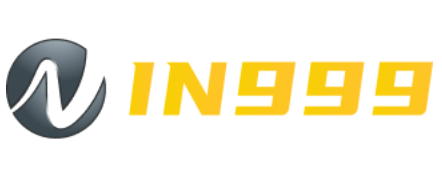Cashback programs have gained immense popularity in recent years, offering consumers a way to earn rewards for their purchases. While they can be appealing, these programs are not without their drawbacks. Many people are drawn to cashback deals, believing that they will save money and get more value from their spending. However, it’s crucial to dig deeper into how these programs operate and the potential downsides that may accompany them. This article will explore various aspects of cashback programs, highlighting the possible drawbacks that consumers should consider before diving in in 999.
Understanding Cashback Programs

Cashback programs typically involve consumers receiving a percentage of their spending back as a reward. These programs can be found in credit cards, retail loyalty programs, or even online shopping portals. As enticing as they might seem, there are inherent complexities and pitfalls that can detract from their intended benefits.
The Allure of Immediate Gratification
Consumers often find themselves lured by immediate gratification when it comes to cashback offers. The idea of getting something back right away can be tempting; however, this entices individuals to spend beyond their means.
- Impulse Spending: The promise of cashback can lead to impulse purchasing. When faced with a deal that seems too good to pass up, consumers may buy items they do not need, thinking that the cashback will offset the expense. Over time, this can lead to increased debt and financial stress.
- Temporary Satisfaction: Even when consumers successfully capitalize on cashback offers, the satisfaction is often temporary. Individuals might feel pleased with their savings at first but may later realize that the overall cost of their spending exceeds any rewards received.
Hidden Terms and Conditions
Many cashback programs come with fine print that outlines specific terms and conditions. Consumers may overlook these details, which can significantly influence the overall benefits of a program.
- Spending Caps: Some programs impose limits on how much cashback can be earned within a given period. For example, a card might offer 5% cashback on certain categories up to a certain limit. Once that cap is reached, consumers revert to lower cashback percentages, diminishing the appeal of the program.
- Eligibility Requirements: Certain cashback offers are only valid for select merchants or require membership in specific programs. Individuals might think they are earning cashback only to discover later that their purchases did not qualify.
See more: in999
Financial Implications of Cashback Programs
While cashback programs appear to present an opportunity for saving money, they can also result in unforeseen financial repercussions.
Increased Debt Risk
Cashback programs can unintentionally encourage users to accrue debt. The allure of cashback can overshadow prudent financial habits.
- Overspending on Credit Cards: Credit card cashback programs are one of the most common forms of these reward systems. Users may feel encouraged to spend more on their cards, driven by the possibility of earning cashback. However, high-interest rates can lead to accumulating debt that outweighs any cashback benefits.
- Cycle of Debt: Once consumers fall into the habit of overspending to maximize cashback benefits, they might find themselves trapped in a cycle of debt. They could start making minimum payments or missing payments altogether, leading to further financial strain.
Opportunity Costs
Earning cashback can lead to missed opportunities in other areas of personal finance.
- Ignoring Investments: Individuals focused on cashback rewards may neglect investing in assets that could yield higher returns over time. Instead of channeling funds toward savings or investments, they might prioritize spending to obtain cashback.
- Lost Savings Potential: When funds are directed toward obtaining cashback rather than building a savings account, consumers effectively lose potential interest that could accumulate on their savings. This choice could hinder long-term financial health.
Psychological Factors at Play
The psychology behind consumer behavior plays a significant role in how cashback programs are perceived and utilized.
Consumer Behavior Biases
Understanding consumer behavior is key to recognizing the potential drawbacks of cashback programs.
- The Sunk Cost Fallacy: Consumers may invest time and energy attempting to earn cashback during specific promotional periods, feeling compelled to make purchases that they hadn’t initially planned. This fallacy can lead them to spend more just to “get their money’s worth,” even if the purchases do not align with their financial goals.
- Reciprocity Principle: The principle of reciprocity suggests that when consumers receive something (like cashback), they feel obligated to give something back. This mindset can prompt individuals to spend more in order to justify receiving cashback, perpetuating a cycle of unnecessary expenditure.
Emotional Responses to Spending
Cashback programs can evoke emotional responses that cloud judgment.
- Shopping as Therapy: For some, shopping becomes a form of therapy or coping mechanism. The excitement of earning cashback can compound this behavior, leading to excessive spending under the guise of rationalizing purchases as “savings.”
- Guilt and Regret: After indulging in impulse purchases driven by cashback incentives, consumers may experience guilt or regret. This emotional turmoil can impact mental well-being and lead to erratic financial habits.
Market Saturation and Program Quality
As cashback programs become increasingly prevalent, the market can become saturated, which may dilute the quality of offerings.
Competition and Diminishing Returns
With numerous companies vying for consumer attention with cashback programs, the competition can lead to reduced benefits.
- Lower Cashback Rates: To remain competitive, businesses may cut their cashback rates over time, diluting the initial appeal of their programs. What once seemed like a lucrative offer can quickly turn into a less attractive option.
- Tiered Reward Systems: Some companies implement tiered systems where consumers must achieve specific spending thresholds to unlock higher cashback rates. This approach may create pressure to spend more, ultimately negating the advantages of the program.
Trust Issues with Providers
A lack of transparency or ethical practices among cashback program providers can erode consumer trust, leading to skepticism and hesitation.
- Misleading Promotions: Consumers may encounter promotions that sound better than they are, leading to confusion and disappointment. Misleading advertising practices can tarnish a brand’s reputation, leaving consumers wary of future cashback offers.
- Program Changes: Frequent changes to program structures and benefits can frustrate consumers. If a provider alters its terms unexpectedly, users may feel betrayed or taken advantage of, causing them to opt out of cashback programs altogether.
FAQs
What are cashback programs? Cashback programs are reward systems offered by credit cards, retailers, and websites that return a percentage of the amount spent back to the consumer as cash or points.
Are cashback programs worth it? While cashback programs can offer savings, they may entice overspending and lead to debt. It’s essential to evaluate individual financial situations and spending habits before committing.
Can cashback programs affect my credit score? Using cashback credit cards responsibly can positively impact your credit score. However, accruing high balances or missing payments can harm your score.
Is there a limit to how much I can earn with cashback programs? Many cashback programs impose spending caps or limitations on how much cashback consumers can earn within specific timeframes, so it’s important to check the terms.
How can I maximize my savings with cashback programs? To maximize savings, focus on using cashback offers for planned purchases, avoid impulse buying, and take note of eligibility requirements and spending caps.
Conclusion
While cashback programs may initially appear to offer tangible benefits, it’s essential to assess their potential drawbacks critically. From promoting overspending and increasing debt risks to creating psychological traps and market saturation, these programs can have long-lasting negative effects on financial well-being. By understanding the implications of engaging in cashback initiatives, consumers can make informed choices, ensuring they align their spending habits with their broader financial goals. Awareness of the potential pitfalls will empower consumers to navigate the world of cashback programs smartly, allowing them to reap the rewards without falling prey to their inherent drawbacks.

